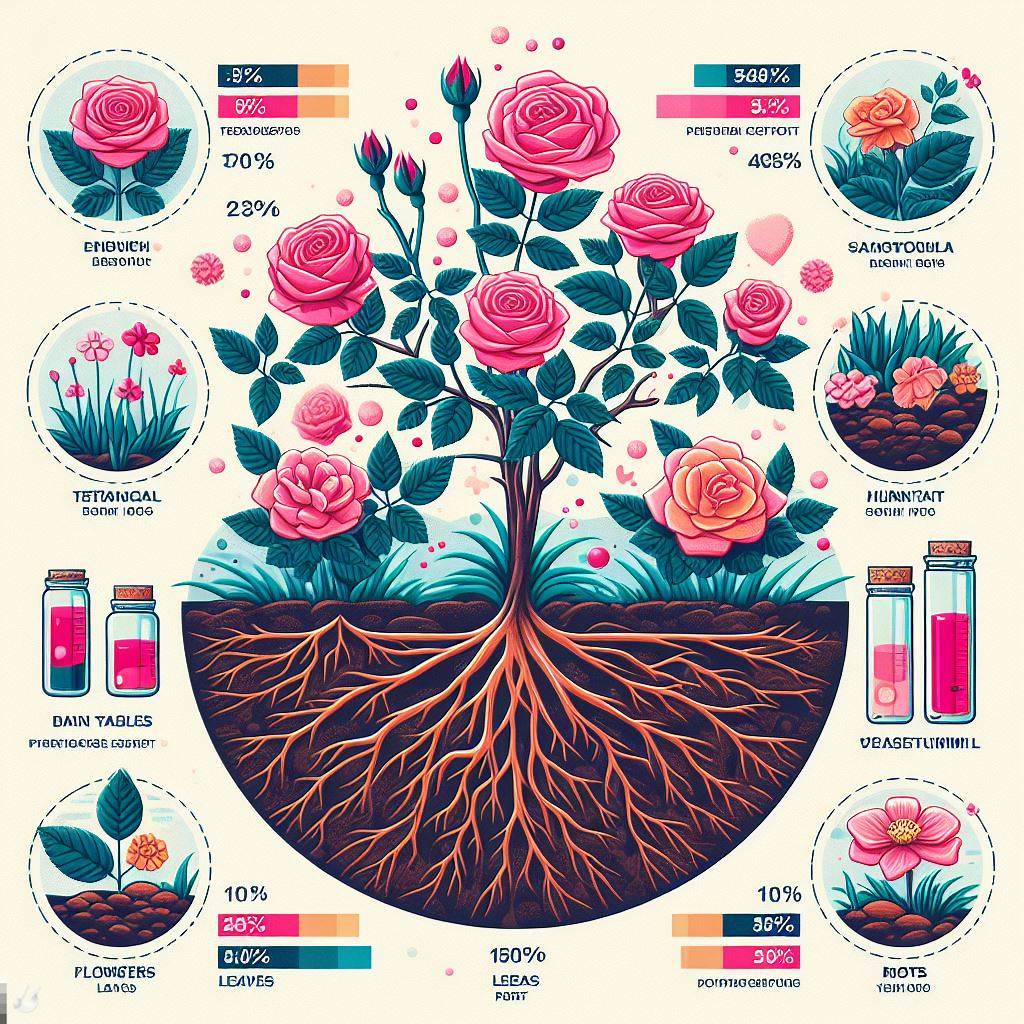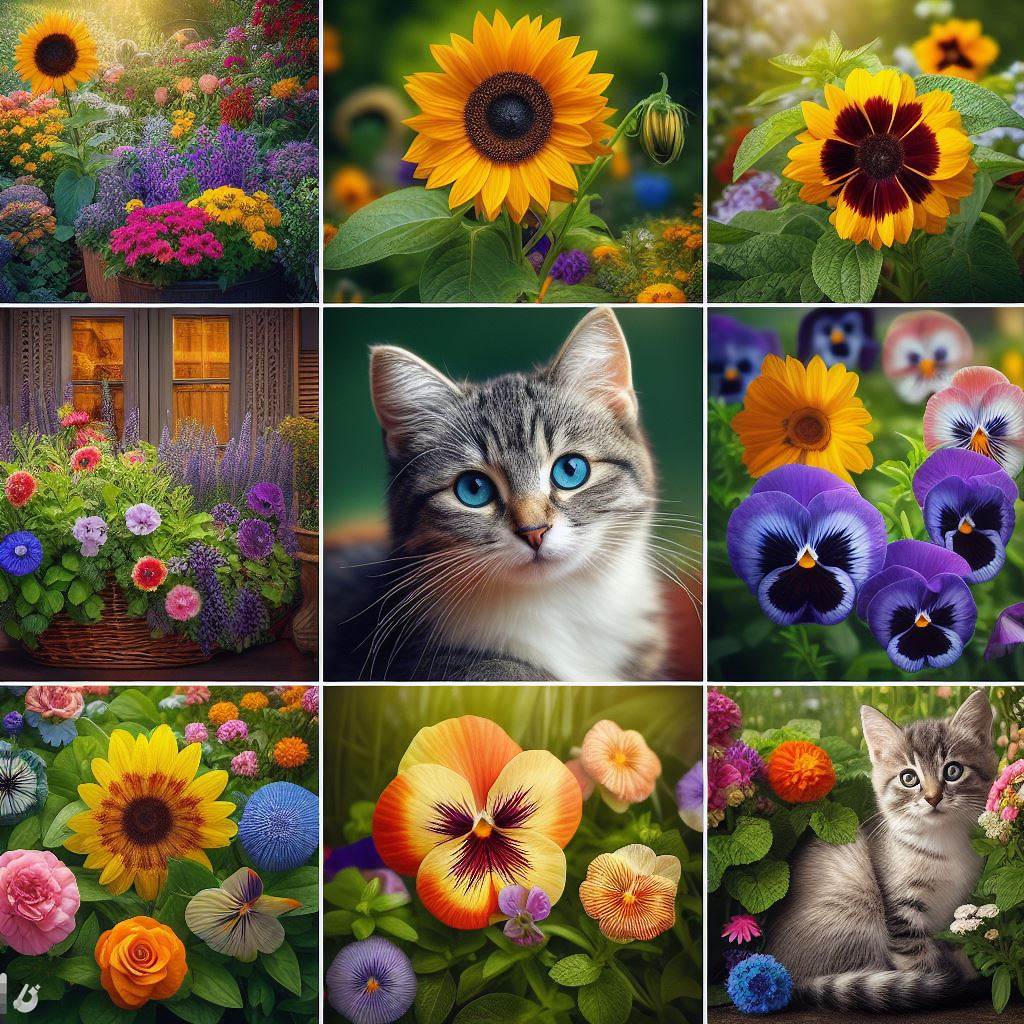Roses are classic garden flowers that add beauty and fragrance to yards, gardens, and outdoor spaces. With their vibrant colors and sweet scent, it’s no wonder roses remain one of the most popular flowers for home gardeners and florists.
But is this classic flower safe to have around our feline friends? Are roses poisonous to cats?
As a cat owner and gardener myself, I decided to look into the facts and evidence from various expert sources to uncover the truth about roses and cats. I gathered statistics, studies, and tips from veterinarians, scientists, and other authoritative sources on botany and feline health.
Here’s everything you need to know about rose toxicity and safety for cats, plus ways to prevent poisoning and keep your furry friends safe.
Are Roses Toxic to Cats? An Overview
The short answer is yes, roses can be poisonous to cats if ingested. All parts of the rose plant, including the flowers, leaves, stems, and thorns, contain toxic substances that can sicken curious cats.
According to the ASPCA, roses are ranked #33 on their list of toxic plants, with a toxicity level of “mild to moderate”. So while rose poisoning is rarely fatal, it’s still best to keep cats away from these blooms.
Cats are especially vulnerable since their smaller size means they feel the effects of toxins faster. Kittens and smaller cat breeds are most at risk.
Common Signs of Rose Poisoning in Cats
If your cat nibbles on or consumes any part of a rose plant, watch for these common symptoms:
- Excessive drooling or vomiting shortly after ingestion
- Diarrhea
- Depression or general weakness/lethargy
- Tremors or muscle tremors
- Incoordination or trouble walking steadily
In severe cases, nerve and heart damage can occur leading to seizures, collapse, and sudden death. Seek emergency vet care if you see any of these signs.
Tip: Take note if your cat is seen chewing rose plants or has access to areas where roses grow. Signs of poisoning can occur instantly or up to 6 hours later.
Why Are Roses Toxic?
There are a few key substances found in roses that make them potentially poisonous for cats:
- Glycosides – Found in the leaves and blooms, these bitter compounds can cause vomiting and diarrhea.
- Polyphenols – Chemicals that give roses their fragrance, but irritate the stomach lining.
- Anthocyanins – Water-soluble pigments that color rose petals red or purple. May cause allergic reactions in cats.
- Essential oils – Fragrant compounds concentrated in the petals, leaves, stems, and roots. Known to cause toxicity in cats.
So while roses smell heavenly to us, their fragrant oils and other compounds just don’t agree with cats!
What Rose Parts Are Most Toxic?

Since toxins are found throughout the plant, all parts of the rose bush should be considered poisonous. This includes:
- Flowers – Petals, blooms, buds
- Leaves and stems
- Roots
- Thorns – Can scratch the mouth and esophagus
Rose hips or seed pods may also be unsafe, though less information is known. Consider them risky.
Bottom line: Assume the entire rose plant (including wild roses) is hazardous to cats and avoid any exposure or ingestion.
Are Some Rose Varieties More Dangerous?
Most species of rose likely contain similar toxins. However, research shows some may be more problematic:
- Tea roses – Hybrid roses are known for their strong flower scent. Higher concentration of essential oils.
- Damask roses – Fragrant, bright pink roses used in perfumes. More essential oils.
- Wild roses – Like Rosa rugosa. Higher levels of glycosides.
- Climbing roses – Fast-growing types often used along fences. Have more thorns.
When possible, opt for rose varieties with less potent fragrances, as these likely contain less of the problematic essential oils. But it’s smart to keep cats away from all roses.
Are Some Cats More at Risk?
All cats are vulnerable to rose poisoning. However, some circumstances put them at greater risk:
- Kittens – More likely to chew and nibble on plants. Curious and less discriminate.
- Outdoor and feral cats – Access to neighbor’s rose bushes and landscaping.
- Indoor/outdoor cats – Can eat roses when outside, then come in and fall ill.
- Bored indoor cats – More likely to chew houseplants or floral arrangements.
- Cats with pica – Eating disorder leads to eating non-food items.
Tip: Senior cats and those with health issues are also at higher risk. Toxins impact their bodies more severely. Monitor them closely.
What To Do If Your Cat Eats A Rose
Accidents happen, and you may find your cat has nibbled on roses despite your best efforts. Here are the steps to take:
- Identify what part of the plant was eaten. Remove all remaining plant parts so the cat cannot eat more.
- Contact your vet immediately. Share what type of rose and how much was ingested.
- They may advise inducing vomiting at home with hydrogen peroxide. Give activated charcoal to absorb toxins.
- Rush to emergency vet care if you see signs of severe poisoning like seizure or collapse.
- At the vet, treatment may include:
- Stomach pumping to remove plant matter
- IV fluids and electrolytes
- Medication for tremors
- Oxygen therapy
- Monitoring of kidney and heart function
- Once home, restrict access to any areas with roses and monitor for delayed symptoms. Call your vet if issues arise.
Can Cats Recover from Rose Poisoning?
With prompt vet treatment, most cats fully recover from rose poisoning.
If treated quickly, before extensive poisoning occurs, cats usually stabilize within 24 hours. With aggressive therapy, even severe cases of toxicity often have positive outcomes.
However, any heart or kidney damage sustained can be permanent or fatal. So time is of the essence – seek immediate treatment at first signs of toxicity.
Are Roses Safe for Cats in Bouquets?
It’s common to want to brighten your home with gorgeous rose bouquets. But are cut roses any safer for cats?
The short answer is that cut roses hold the same toxicity risk. Many cats are tempted to chew on or lick flower petals out of curiosity. Any ingestion of rose parts puts them at risk.
I recommend keeping cut bouquets completely out of paws’ reach, such as:
- Up high on shelves and mantlepieces
- Behind closed doors in rooms, cats cannot access
- Inside covered glass domes or cloches
If you do display roses, supervise closely and Never leave cats unattended with bouquets. One nibble can make them ill.
Can You Make Your Garden Less Toxic for Cats?
If you’re both a rose lover and a cat owner, you can take steps to make your yard safer:
- Research and plant only non-toxic flowers and herbs like marigolds, petunias, basil, and catnip.
- Put up fencing or netting to block off rose beds and garden areas.
- Use organic deterrent sprays made of bitter citrus oils to discourage nibbling. Reapply after rain.
- Place attractive pots of cat grass around your yard to distract cats from chewing roses.
- Build a cat patio with toys, scratchers, and catnip plants to keep your feline busy elsewhere.
- Keep cats indoors when working in the garden, then do a sweep for fallen plant parts before letting them out.
Common Garden Plants Also Toxic to Cats
Roses aren’t the only backyard bloom that spells danger. Here are other popular plants poisonous to cats:
- Lilies – Extremely toxic, causing kidney failure. All parts.
- Tulips – Bulbs can cause intense vomiting and convulsions.
- Daffodils – Narcissus bulbs are highly poisonous. Cause vomiting, and seizures.
- Azaleas – Entire rhododendron family is toxic. Impacts heart rate.
- Chrysanthemums – Contain pyrethrins that are toxic to cats’ livers.
- Amaryllis – Bulbs and leaves cause abdominal pain and hyper-salivation.
- Hostas – All parts cause vomiting and diarrhea. Also toxic to dogs.
Do your research before planting and make sure your yard is cat-safe!
Indoor Houseplants Toxic to Cats
Indoor cats aren’t off the hook, as many popular houseplants can also pose a risk:
- Lilies – The #1 most dangerous indoor plant for cats. Extremely poisonous.
- Sago palm – Raw seeds/nuts are highly toxic. Causes liver failure.
- Philodendron – Chewing releases oxalate crystals that cause intense burning.
- Pothos ivy – Causes nausea, trembling, and dilated pupils in cats.
- Aloe vera – Juice and gel can cause vomiting, diarrhea, and red urine in cats.
- Mistletoe – All parts cause stomach and breathing issues. Can be fatal.
- Dieffenbachia – Known as “dumb cane,” causes painful swelling of the tongue and mouth.
Keep these common houseplants well out of reach and never trust cats not to nibble! Monitor closely.
Are There Non-Toxic Flowers for Cats?

Luckily, there are many beautiful blooms proven safe for cats that you can enjoy indoors and outside:
- Sunflowers – Cheery flowers, safe for cats to nibble.
- Pansies – Colorful edible blossoms cats can enjoy.
- Petunias – Pretty purple or pink blossoms that won’t harm cats.
- Snapdragons – Fun flowers safe for cats. Blossoms resemble dragon mouths.
- Nasturtiums – Cheerful edible flowers in bright orange and yellow hues.
- Calendulas – Bright non-toxic blooms that attract butterflies.
- Catnip – Member of the mint family. Most cats enjoy nibbling leaves.
- Cat grass – Wheatgrass is grown specifically for cats to chew.
So you can safely enjoy beautiful blossoms – just skip the roses and research before planting!
Alternative Non-Toxic Bouquets and Petals
When looking for cut flower alternatives safer for your cat:
- Avoid all flowering bulbs – toxic to cats
- Skip roses, lilies, tulips, daffodils – very dangerous!
- Choose sunflowers, daisies, and carnations – petals are non-toxic
- Look for bouquets labeled “cat friendly” – some florists offer these
- Research safety of less common flowers like peonies and ranunculus
- Use non-plant options like paper flowers or cloth petals
With so many toxic blooms, it pays to do your homework and read flower labels before display. When in doubt, keep it out of paw’s reach.
Are Organic or Dried Roses Any Safer?
I’ve heard some claim that organic, wild, or dried roses might be less toxic to cats. However, there is no evidence any rose preparations are safer.
All parts of the rose contain innate toxins, no matter how they are grown or processed. There’s no “safe” form of rose for cats.
So opt for silk or preserved roses if you want decorative flowers that are risk-free for cats. And of course, never let them nibble actual organic rose petals or use them in homemade cat treats!
Key Takeaways on Roses and Cats
To summarize everything we’ve covered about rose toxicity and cat safety:
- All parts of rose plants (flowers, stems, leaves, thorns) are toxic for cats
- Glycosides, essential oils, and other compounds make roses poisonous
- Can cause vomiting, diarrhea, depression, tremors, and heart issues
- Quick vet treatment can allow full recovery in many cases
- Cut roses hold the same risk as live plants
- Non-toxic flowers and cat-safe gardens are alternatives
- Prevention and limiting access are key to keeping cats safe!
So while roses pose a moderate danger to cats, you can take steps to safely enjoy your flowers and houseplants while protecting your feline companions.
Using common sense, doing your research, and cat-proofing areas goes a long way. Know which plants are toxic and steer clear of roses around your curious kitties.
The Bottom Line: Keep Cats and Roses Apart!
Roses and cats don’t mix well, unfortunately. But armed with the facts, you can prevent poisoning risks and make smart choices for your home and garden.
As a fellow cat lover and rose enthusiast, I hope this guide gave you the information needed to keep your cats safe. They give us so much joy and love – it’s only right we protect them in return.
With smart prevention and non-toxic alternatives, you can fill your life with beautiful blossoms without endangering your feline friends. Let’s enjoy gorgeous gardens and healthy, happy cats!




